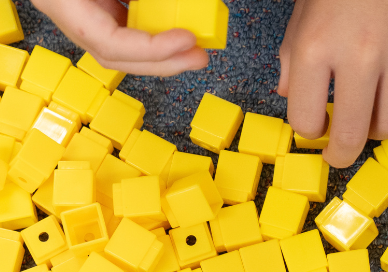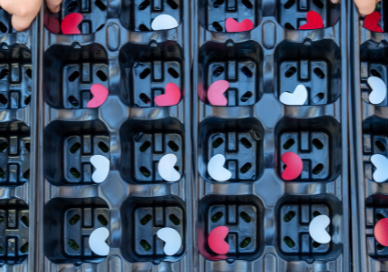Designing for student learning
Inquiry through noticing
“Exploration and understanding are at the heart of what it means to do mathematics”
From Mathematics for Human Flourishing by Francis Su (p. 23).
For students to learn mathematics with deep understanding they must be explorers or inquirers of mathematical patterns and relationships. They must learn to “see” and think like a mathematician to engage in deep meaningful learning. Important features of this mathematical learning approach include:
- perceiving or noticing the structure of, and structural relationships among, mathematical ideas (Schoenfeld, 1992)
- noticing or looking for patterns and relationships leading to generalisations and predicting relationships and results leading to conjecturing (Mason et al., 2010)
These approaches place noticing as an essential skill for meaningful engagement in mathematics inquiry or exploration.
For students to be successful in mathematical inquiry, they should be proficient in noticing. Noticing is the active process of attending to mathematical structure. What students notice guides their next move in their learning or inquiry. In general, failure to notice leads to failure to learn, particularly with understanding.
Designing for teacher learning
The reSolve digital educative teaching resources (dETR) have been designed and developed to be educative for teachers as well as students (Ball & Cohen 1996). They are intended to support teacher learning both as a teaching resource and learning resource. They do this through evidence-based professional learning (PL) which is embedded into online teaching sequences.
The resources deliver a range of professional learning which focuses on content and practices which are embedded in the teaching sequences and ‘Teaching with Intent’ elements.
The dETR supports teachers to develop their:
- Mathematical knowledge for teaching (MKT) - PL content is situated in practice, active teacher learning, use of models, focus on student learning, focus on teacher-student relationship (Ball et al., 2008).
- Pedagogical design capacity (PDC) - PL connects evidence with practice, to makes teaching sequences’ design decisions visible and clarifies criteria to develop capacity to adapt and modify resources without compromising intended learning outcomes (Remillard, 2018).
The dETR are delivered in digital formats online to teachers, making it possible for anyone, anywhere, to access them free of charge. They have been designed to be scalable, as the intent is that they can be used by individual teachers in the classroom, by school leaders working with staff, by the whole school and by the broader system. They also use digital communication as a platform for curated ‘live’ interactions with teachers to provide access to reSolve expertise.
Features of effective professional learning
| Borko, Jacobs & Koellner (2010) | Darling-Hammond, Hyler & Gardner (2017) | Hill & Papay (2022) |
|
|
|


